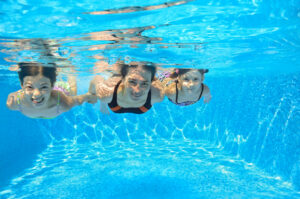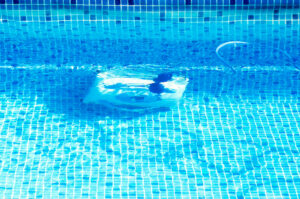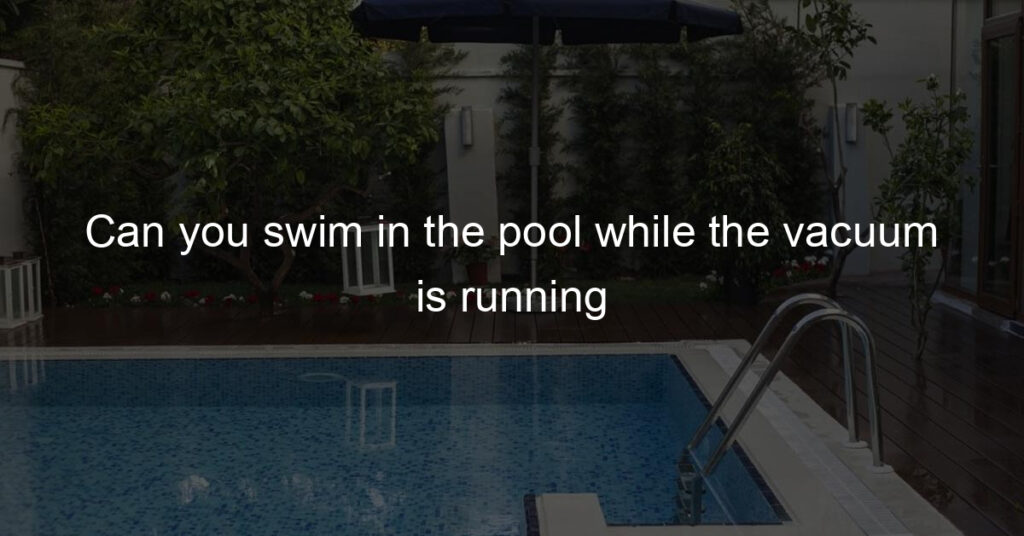Understanding Pool Vacuums: What They Do
Pool vacuums are essential tools in pool maintenance, helping to keep the water clean by removing debris and sediment. Functionally, these devices work by using suction to draw water into a collection chamber or bag, trapping unwanted particles within. In more advanced models, brushes or other mechanisms may also be used to scrub the pool’s sides and bottom, helping to break up and remove stuck-on algae or other material. Despite their immense utility in keeping a swimming pool clean and inviting, it’s important to know when it’s safe to swim and when it isn’t, particularly when the vacuum is in operation.
Types of Pool Vacuums: Manual and Automatic
There are primarily two types of pool vacuums: manual and automatic. Manual pool vacuums require physical labor, as you need to move the vacuum around the pool yourself to clean it. On the other hand, automatic pool vacuums do all the work on their own. They fall into three main categories: suction-side cleaners, which attach to the pool’s existing pump and filter system; pressure-side cleaners, which work with the pool’s pressure side circulation system; and robotic pool cleaners, which operate independently of the pool’s filtration system. Each type has its advantages and disadvantages, but all have certain safety considerations when used while swimming.
Risks of Swimming with a Pool Vacuum in Operation
Swimming with a pool vacuum in operation poses several risks, ranging from minor inconveniences to potential hazards. For one, you might inadvertently interfere with the vacuum’s cleaning pattern, making its job less effective. But more seriously, there’s a risk of entanglement with the vacuum’s cord or hose, particularly for younger swimmers or pets. In rare cases, if the vacuum’s intake is powerful enough, it could potentially cause injury to swimmers who come too close.
How Pool Vacuums Navigate: Potential Dangers to Swimmers
Pool vacuums, particularly automatic models, navigate the pool using various technologies. Some follow a random pattern, while others use sensors or algorithms to systematically clean the pool. While this helps ensure thorough cleaning, it can also pose a danger to swimmers. The unpredictability of a vacuum’s movements can lead to unexpected encounters, causing possible injuries from collisions or entanglements. The risk is higher for robotic cleaners that operate with more force and speed.

Considerations for Different Types of Pool Vacuums
Not all pool vacuums pose the same level of risk when swimming. Manual vacuums are generally the safest, as long as the operator is aware of swimmers in the pool. Automatic vacuums present varying levels of risk, depending on their design. Suction-side and pressure-side cleaners generally have less moving parts and operate slower, but their hoses can still present entanglement risks. Robotic cleaners, being more powerful and faster, may pose a higher risk, especially to younger swimmers or pets.
Safety Precautions When Using a Pool Vacuum
To ensure safety while using a pool vacuum, follow certain precautions. Avoid swimming while the vacuum is in operation, especially if it’s an automatic model. If you must swim, make sure you’re aware of the vacuum’s position and movement at all times. Keep younger swimmers and pets away from the pool during cleaning. Finally, if your vacuum is corded, ensure the cord is secure and not a tripping hazard on the pool deck.
Case Studies: Accidents Involving Swimming with Pool Vacuums On
While accidents involving pool vacuums are relatively rare, they can be severe. For example, there have been cases of swimmers becoming entangled in a vacuum’s cord, leading to injuries or, in extreme situations, drowning. Such incidents highlight the importance of either not swimming while the vacuum is running or, if swimming is necessary, ensuring a high level of supervision and safety measures.
Expert Opinions on Swimming During Pool Vacuuming
Most pool safety experts advise against swimming while the pool vacuum is in operation. According to them, the risks, while small, are simply not worth it. Even a minor accident or injury can be a significant interruption to your pool enjoyment. Instead, they recommend scheduling pool cleaning for times when the pool is not in use. This can be overnight or during the day when everyone is away.

Guidelines From Pool Vacuum Manufacturers
Manufacturers of pool vacuums typically advise against using their products while people are swimming. They note that the devices are not designed with this purpose in mind and that doing so could increase the risk of accidents. Furthermore, swimming during the vacuuming process can interfere with the cleaning process, causing it to be less effective. It can also cause unnecessary wear and tear on the vacuum, potentially shortening its lifespan.
Assessing the Potential Damage to Your Pool Vacuum
Swimming while a pool vacuum is in operation isn’t just a potential safety risk—it can also damage the vacuum. This is particularly true with automatic vacuums, which rely on a set pattern to effectively clean the pool. If swimmers disrupt this pattern, it can cause the vacuum to miss spots or work harder to compensate, leading to more wear and tear. In some cases, a vacuum may even be damaged by physical contact with swimmers.
Can You Swim While a Robotic Pool Cleaner is Running?
While swimming while a robotic pool cleaner is running isn’t strictly forbidden, it’s generally not recommended. Robotic pool cleaners are the most powerful type of automatic pool vacuum and move quickly compared to their suction-side and pressure-side counterparts. This can increase the risk of collision or entanglement. They also often have larger intakes, increasing the potential for injury if swimmers get too close.

Dealing with Pool Cleaning: Alternatives to Swimming While Vacuuming
If you want to swim but also need to clean your pool, there are a few alternatives to consider. One option is to schedule your vacuuming for a time when no one wants to swim, such as early morning or late at night. Another option is to use a manual vacuum, which allows you to control exactly where the vacuum goes and to stop it immediately if someone wants to swim.
Risks Vs Benefits: Is it Worth Swimming with a Vacuum On?
Ultimately, the decision to swim while a pool vacuum is in operation comes down to weighing the risks versus the benefits. While it may seem convenient to swim and clean at the same time, the potential risks should not be overlooked. Even minor injuries can lead to significant discomfort and inconvenience, and more serious accidents could have severe consequences. Given these considerations, it’s often best to avoid swimming while the vacuum is running.
The Role of Pool Maintenance in Ensuring Swim Safety
Regular pool maintenance, including vacuuming, plays a critical role in ensuring a safe swimming environment. It keeps the water clear and free from debris that could cause injuries or damage the pool’s systems. However, the process of maintaining the pool must also be conducted safely. This includes taking precautions when using pool vacuums, particularly when swimmers are present.
Conclusion
Swimming with a pool vacuum in operation is not generally recommended.
The vacuum’s work can be interrupted, and it could be damaged, particularly if it’s an automatic model.
There are also safety risks to consider, such as entanglement or collision.
Each type of vacuum has its own set of potential issues, so understanding the different types and their operational features is crucial.
To maximize both safety and cleaning efficiency, it’s best to schedule your pool vacuuming for times when swimming is not likely to occur.
Finally, always consider the manufacturer’s guidance when using your pool vacuum.
For a fun and safe swimming experience, patience and a little planning can go a long way!














